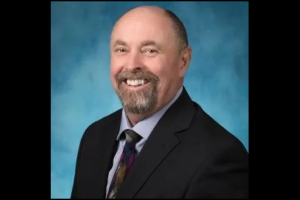 The recent wildfires that swept through the greater Los Angeles area have left an enduring impact on countless lives. With more than 10,000 homes tragically destroyed, entire communities are now facing profound loss and uncertainty.
The recent wildfires that swept through the greater Los Angeles area have left an enduring impact on countless lives. With more than 10,000 homes tragically destroyed, entire communities are now facing profound loss and uncertainty.
As members of the Mountain Counties Water Resources Association, we extend our heartfelt sympathy to everyone affected by this devastating catastrophe. Having witnessed the far-reaching consequences of megafires in our own Sierra foothills, we understand the gravity of such events and their lasting effects. In our role as advocates for balanced water resource management, we are committed to learning from these tragedies to improve wildfire preparedness in our region, while acknowledging both the critical purpose and the limitations of public water systems in the face of such challenges.
Public water systems are the backbone of our communities, delivering clean and dependable water to homes, businesses and public facilities. While they play a crucial role in daily life and supporting local firefighting efforts, they are not designed to serve as the primary resource for combating large-scale, wind-driven wildfires. These systems are engineered to meet every day needs and assist in emergencies such as small-scale structure fires. However, no drinking water system can independently meet the extraordinary demands of massive wildfires like the Palisades and Eaton fires, which require vast amounts of water, thousands of personnel, extensive equipment and aerial resources.
Recognizing these limitations is essential to community risk planning and emergency preparedness. And key to wildfire preparedness is effectively managing the wildland-urban interface — the zone where human development meets and intermingles with natural landscapes, creating heightened wildfire risks. Addressing these areas is crucial for minimizing potential damage.
From Northern to Southern California, proactive measures such as vegetation management, maintaining defensible space, enforcing building and fire codes and ensuring clear access for emergency responders can substantially reduce the threat of wildfires in the WUI. During wildfires, public water systems face extraordinary challenges. Firefighters often tap into hydrants at multiple points simultaneously, causing significant drops in water pressure. High demand can rapidly deplete storage tanks and overwhelm pumping capacities, compromising the system’s overall performance. Additionally, power outages — all too common during major wind events and wildfires — can temporarily disable pumps and other critical water infrastructure, further hindering efforts to maintain reliable water delivery.
Contrary to popular belief, expansive wildfires are not extinguished with vast amounts of water alone. Instead, they are controlled by establishing fire lines — physical barriers created by hand crews and heavy equipment, such as bulldozers — to halt the fire’s progress. This underscores the need for a comprehensive, proactive approach to wildfire preparedness and resilience. By implementing the following strategies, we can significantly reduce risks and bolster community safety:
Defensible space and community planning — Communities and property-owners must prioritize defensible space by clearing flammable vegetation, using fire-resistant landscaping and building materials and maintaining accessible fire lanes and evacuation routes.
System redundancy and backup power — Water agencies should further invest in backup power generators for pumping stations and enhance system redundancy to ensure water delivery even during power outages.
Strategic water storage — Streamlining regulatory processes and increasing local (raw and potable) water storage capacity can help maintain reserves for emergencies. Storage tanks in fire-prone areas equipped with firefighter connections are essential for rapid response.
Emergency coordination and interconnections — Water agencies and fire departments must collaborate on emergency response plans and establish real-time communication during wildfire events to prioritize water distribution. Interconnections between water systems can move resources where they are needed most.
Public education — Residents must understand the limitations of water systems during wildfires and take personal responsibility for preparedness, including hardening homes and reducing fire risks.
Vegetation management and fuel modification — Partnerships and expedited permitting processes with state and federal agencies to manage fuel loads in forests, chaparral, and the wildland-urban interface are crucial to making rapid progress towards mitigating wildfire risks and severity.
Reviewing local fire codes — Evaluating and updating local fire codes ensures that lessons learned from recent events are incorporated into public water system design and fire protection standards.
Investing in innovation and resilient infrastructure — Water agencies must embrace innovative technologies for real-time monitoring, enhance water storage and delivery capabilities, and secure state and federal investments to strengthen aging infrastructure against climate change and wildfire risks.
Policy advocacy — Advocacy for balanced, science-based policies is essential to address wildfire and water management challenges. Collaboration among state, local and federal stakeholders can create more effective frameworks for managing wildfire risks sustainably.
The passage of Proposition 4 in 2024 provides a transformative opportunity to implement many of these recommendations. This state bond funding supports wildfire resilience and water infrastructure projects, including fortifying raw water conveyance systems and developing reservoirs in high-risk areas. Communities in the Sierra foothills and beyond must actively leverage these funds to enhance preparedness and reduce vulnerabilities.
The devastating losses in greater Los Angeles remind us of the critical need for vigilance and collaboration. Public water systems are a cornerstone of community safety, but they are only part of the solution. By working together — water agencies, firefighters, policymakers and residents — we can build more resilient communities and better protect lives and property.
Our thoughts and prayers remain with the communities of Pacific Palisades and Altadena as they recover from this tragedy. Let us honor their resilience by taking meaningful steps today to ensure a safer, more prepared future for all Californians.
